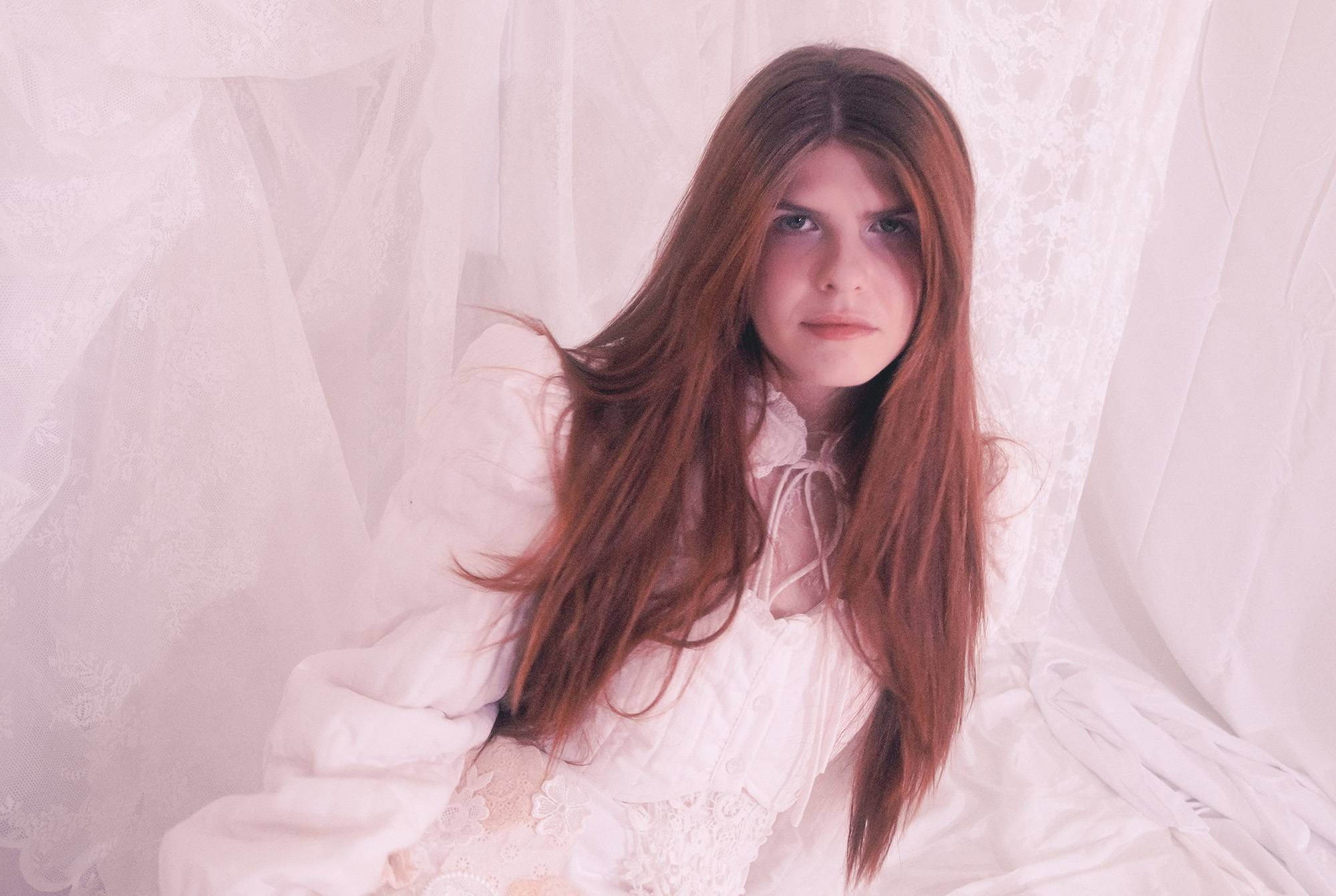TV Reviews
Sabrina Fights the (White, Straight) Patriarchy in Netflix’s “Chilling Adventures of Sabrina”
06 Nov, 18
Warning: this article contains spoilers for Part One of The Chilling Adventures of Sabrina.
Stories that explore the occult are rife with opportunities to explore identities typically “othered” by white patriarchal society, including women, people of color, and LGBTQ+ individuals. Witches and warlocks can inhabit our world as seen through the eyes of outsiders, and thus provide the perfect opportunity for storytellers to take a hard look at what (or who) we give priority, meaning, and power.
It’s clear from the first episode of Netflix’s The Chilling Adventures of Sabrina that this retelling of Sabrina Spellman’s, the half-human, half-witch orphan who must choose between the two worlds, story is not a reboot of the ABC ’90s sitcom. In the first ten minutes, a lonely, socially-awkward schoolteacher is murdered and possessed by a demon-witch, which gives the audience a small indication of the show’s shift toward the comics’ darker inclinations. The episode ends with a vision of hanging witch corpses and the horrifying goat-man Baphomet, AKA the Dark Lord, rising from the pits of hell. Oh, and there are no talking cats (Praise Satan).
Creator Roberto Aguirre-Sacasa’s Chilling Adventures takes a bold approach to the teenage witch’s choice between life as a mortal and life as a spell-casting sorceress, framing her decision to inhabit both worlds as a middle finger to the patriarchal Satan. As Sabrina approaches her 16th birthday and prepares for her long-awaited dark baptism, a witch’s rite of passage where she signs her name in the “book of the beast,” she is told that the ceremony is largely symbolic. However, when she realizes that one must wed Satan and obey his every whim to join the coven, Sabrina chooses to flee and keep her freedom instead. Throughout Part One’s ten episodes she casually plots to dethrone the Dark Lord—an intriguing idea despite its inherent lunacy.
Sabrina’s human squad has also been reimagined. In the age of #MeToo, they are in charge, mad, and not willing to put up with their bully white guy principal any longer. Watch out, because they are “woke” teenagers adept at analyzing the influences of “civil rights” and the “collapse of the nuclear family” on zombie D-movie plotlines. Together with her black best friend Roz and gender-non-conforming Susie, Sabrina founds the first-ever WICCA club at Baxter High, which stands for the Women’s Intersectional Cultural and Creative Association. This is where the eye rolls begin.
Sabrina is a White Feminist Ally™ and while the show relishes its “intersectional” tag, it’s mostly just paying lip service. This is Sabrina’s story, and any character who isn’t straight or white is sidelined for her arc, which again and again reinforces the myth that only white people are powerful enough to solve the world’s problems. For a show that spins itself as a feminist manifesto, it misses many opportunities to highlight race and LGBTQ+ issues for its large and diverse cast.
There are a number of warlocks and witches of color in the series, including Ambrose Spellman, Sabrina’s pansexual English cousin, and Prudence Night, the leader of the antagonist witch trio the Weird Sisters. Neither character is used to their fullest capabilities.
Ambrose is maddeningly on house arrest for most of the story and is thus relegated to Sabrina’s helpful, rule-breaking warlock sidekick. His pansexuality is referenced by his romantic and sexual interests with both men and women, which is refreshing to see, but also could be explored more deeply since pansexuality is likely an identity your average viewer is still confused about. The character feels like he’s being tokenized, thrown in to pander to its socially liberal viewership.
Prudence on the other hand is a hell-raising, devoted witch who has it out for half-blood Sabrina. Of course, while audience members are invited to grow attached to Prudence throughout the series, her character is clearly the evil counterpart to Sabrina the “good witch.” This dynamic is tired in 2018, as it paints yet another woman of color as the “angry black woman,” and another white person as her moral superior. Too often the subtle choices we make in casting characters for television or film can reinforce inherent racial prejudices. Prudence is even surprisingly lynched by hanging (but does not die) in a tone-deaf choice by the show’s creators in the fourth episode.
In a recent io9 piece, Beth Elderkin and Charles Pulliam-Moore critiqued the scene perfectly: “This should not have to be explained, but it is in extremely bad taste to depict black people being hanged on television without an extraordinary amount of context and care that make it clear that (a) the creators of the television show understand the significance of that imagery, and (b) said hanging serves a narrative point.”
Like most cultural representations of witches, Chilling Adventures focuses on white women both as heroes (Sabrina) and also as the victims of social prejudice, as with the case of the Thirteen, a group of white witches who were hung and seek revenge in the show’s final episodes. This ignores the victimhood of slaves and other people of color who had non-Christian religions that were demonized as witchcraft in real life. For example, Tituba, an enslaved woman of color, was accused of teaching and using curses on the girls on trial in historical Salem, and some historians think the racism against her was a great source of the mass hysteria that ensued.
The show also doesn’t seem to know what to do with its much-touted non-binary character Susie. While the inclusion of the character seems to be well-meant, especially since they are played by non-binary actor Lachlan Watson, they are written to be a sad, misunderstood teenager who is constantly harassed by bigoted boys at school for not being feminine (Susie’s pronouns are never revealed, but Watson prefers they/them pronouns). The word “non-binary” is never even spoken in the show, but Susie’s identity struggle is obvious, especially with their nightly visitations from a cross-dressing ancestor whose ghost spills the tea on the Spellman family’s secret witchcraft. Audience members feel a bit like they’re in the ’50s with the handling of gender identity on the show. And again, Sabrina is cast as the savior, ganging up with the Weird Sisters to taunt Susie’s bullies with a weirdly homophobic gag, tricking them into thinking they’re making out with the witches when they’re really kissing each other (the horror!).
At the end of the day, Netflix’s Sabrina is a teenage melodrama, so perhaps some of these critiques are unfair. It has its positive aspects, like its, at times, terrifying supernatural flare, a cast that gives mostly rock-solid performances, and an interesting take on Sabrina vs. the patriarchy/Satan.
However, the show is too obviously catering to millennials and Generation Z-ers in the age of #MeToo and hyper social justice. It screams its feminist intersectional allyship from the mountaintops, but clearly doesn’t know what it’s talking about. Rather than investing in meaningful plot lines that heighten the outsider’s perspective of characters that are LGBTQ+ and people of color, it treats them as puppets to indulge its youthful base and make them feel “woke.”
In reality, viewers are being fed the same old inequitable narratives that keep those at the top and bottom in their “rightful” place. If you’re going to take the time to create a show with as much diverse, fantastical potential as this one, then you need to act on that promise.
Take note, Roberto Aguirre-Sacasa. Do more with season two.
Rating: ⚡⚡
Joshua Smalley is a New York-based writer, editor, and playwright. Find Josh at his website and on Twitter: @smalleywrites.
POP⚡DUST | Read More…
‘Labyrinth’ and ‘The Great British Bake Off’ Meet in ‘Curious Creations of Christine McConnell’
Do Networks Even Know What a Musical Is?
FringeNYC Ships Mercutio And Tybalt In New Play Starcrossed
- “The Witch,” Satanic Feminism, Lana Del Rey, and Wicked Women – Popdust ›
- Netflix Adds a Little Haitian Voodoo to “Chilling Adventures of Sabrina the Teenage Witch” – Popdust ›
- Welcome to Genderqueer TV: 5 Non-Binary Characters – Popdust ›
- Netflix’s Chilling Adventures of Sabrina finds a smart metaphor in … ›
- ‘Chilling Adventures of Sabrina’ review: Reboot is devilishly good ›
- ‘Chilling Adventures of Sabrina’ Review: The Witch Is Back! – Rolling … ›
- Review: ‘The Chilling Adventures of Sabrina’ Pits Teenage Rage … ›
- Chilling Adventures of Sabrina review – where has the magic gone … ›














